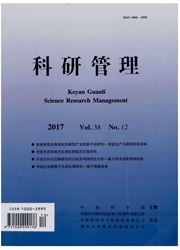

 中文摘要:
中文摘要:
本文探讨了高科技企业员工在裁员后的威胁感知对其创造力的影响机制,并结合资源获取因素分析它们对创造力交互影响的作用机制。运用大样本调研的方法,我们发现,当员工裁员后感知到威胁时,会对创造力产生负面影响;反之,当员工裁员后感知到机会时,会对创造力产生正面影响,而员工在裁员后是否能够从组织中获取充足的资源和员工创造力之间存在正向的相关关系。同时,资源获取还会调节威胁感知和员工自我感知创造力之间的关系。与裁员后感知到机会的员工相比,裁员后感知到威胁的员工如果能从组织中获取创新所需要的相关资源,则他们将体验比在低资源获取时更高的创造力。但是这种效应在员工感知到机会时,不那么显著或不存在。也就是说,员工在裁员后感知到威胁时,其创造力在不同的资源获取情况下的差别,要远大于感知到机会的时候。
 英文摘要:
英文摘要:
The impact mechanism of threat perception on the employees' creativity after high - tech finn downsizing is examined. Based on the survey with a big sample, it is found that first, if employees consider downsizing as an opportunity (or threat), then they would exhibited greater (or less) creativity after downsizing; second, resource access has a positive impact on employees' creativity; and third, resources access moderates the relationship between threat perception and self- perceived creativity in such a way, that is, comparing with employees who think downsizing as an opportunity, the employees who think downsizing as a threat experience greater creativity when resource access is high than when resource access is low.
 同期刊论文项目
同期刊论文项目
 同项目期刊论文
同项目期刊论文
 期刊信息
期刊信息
